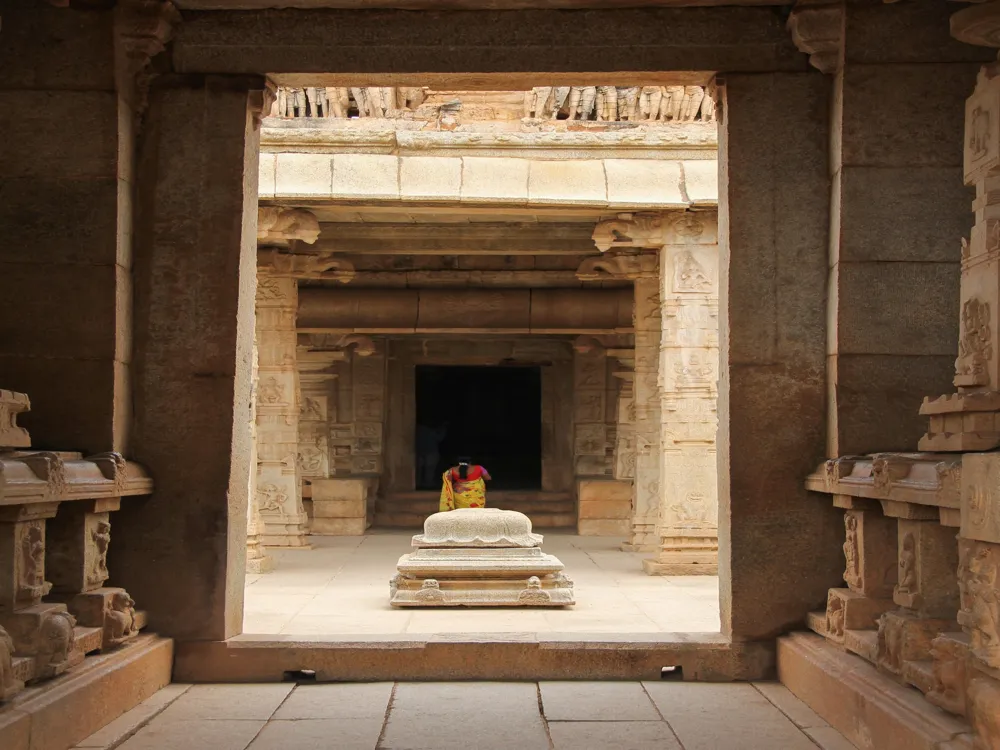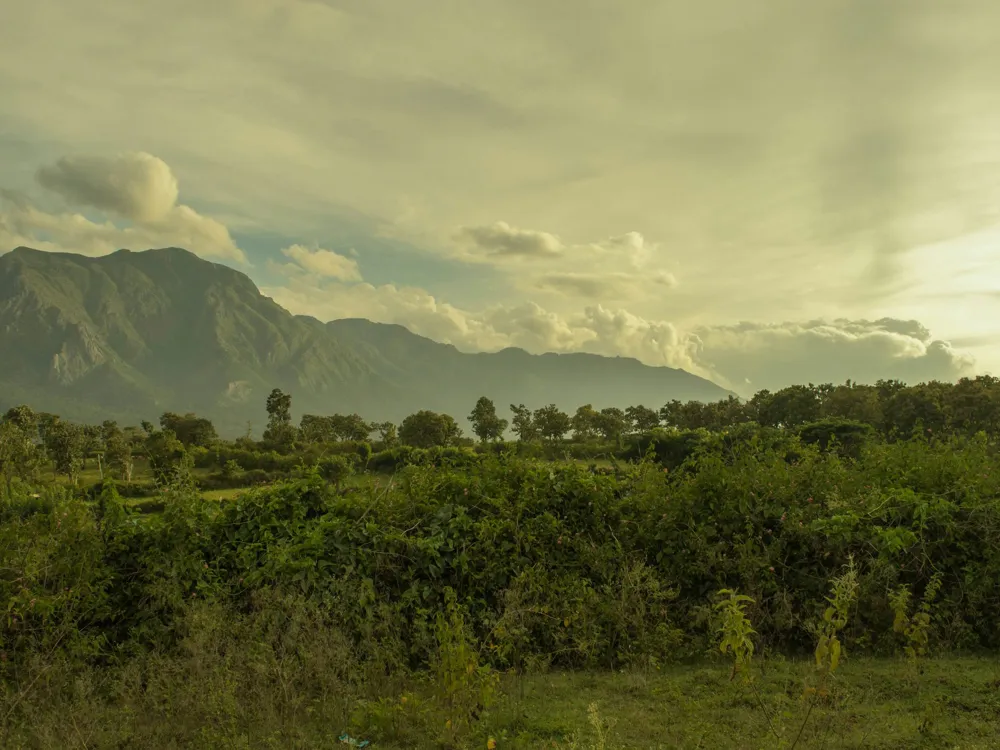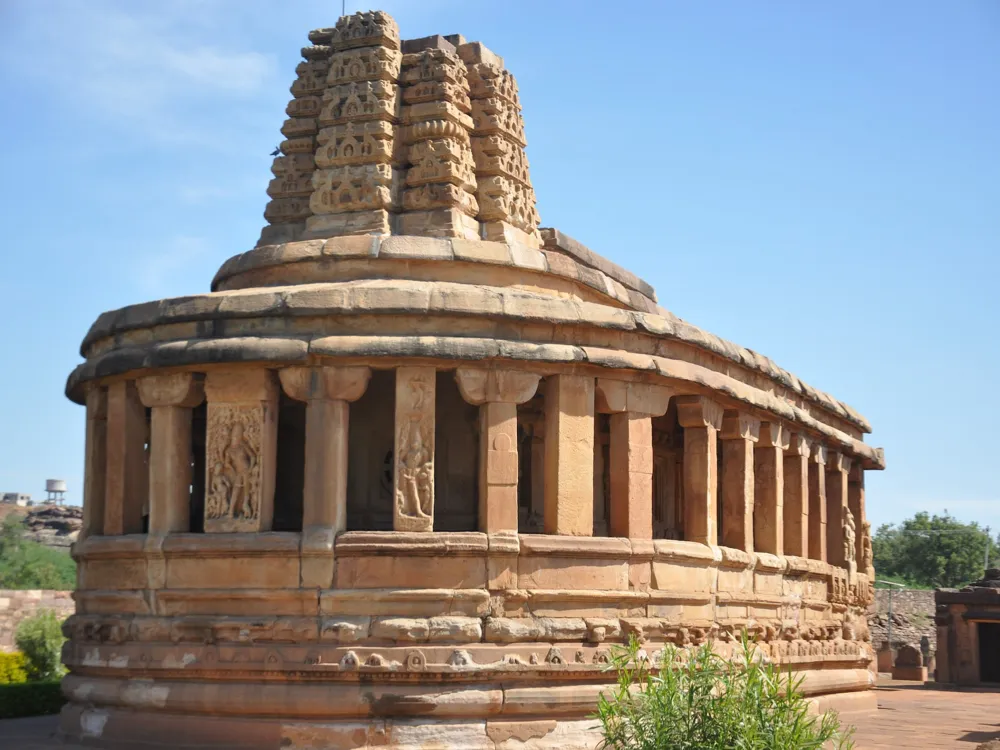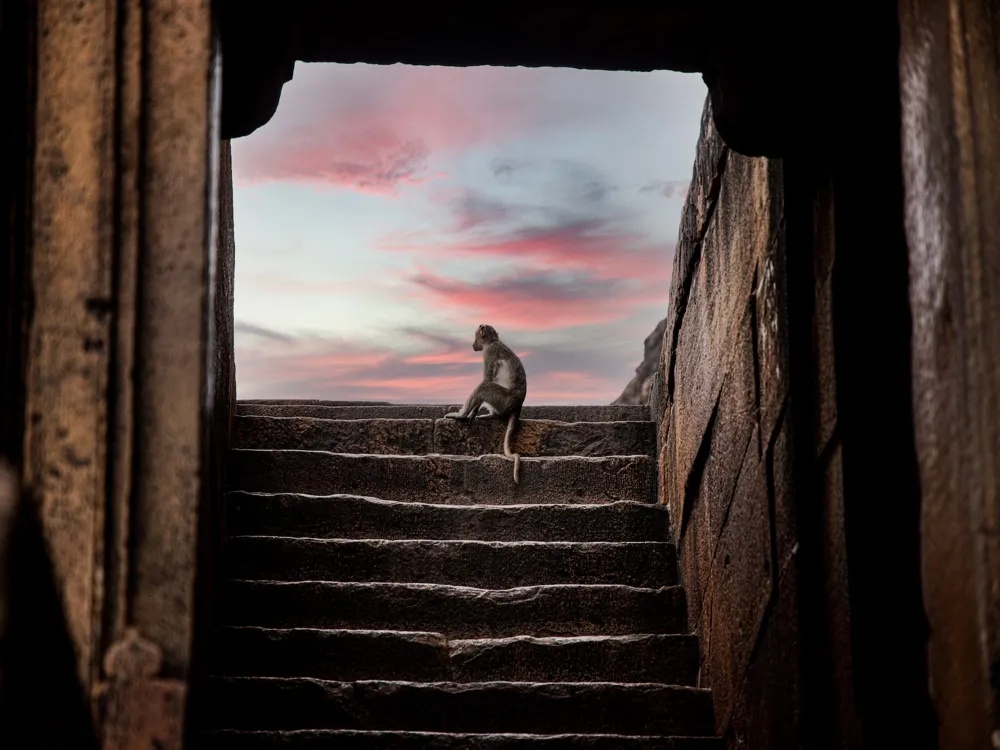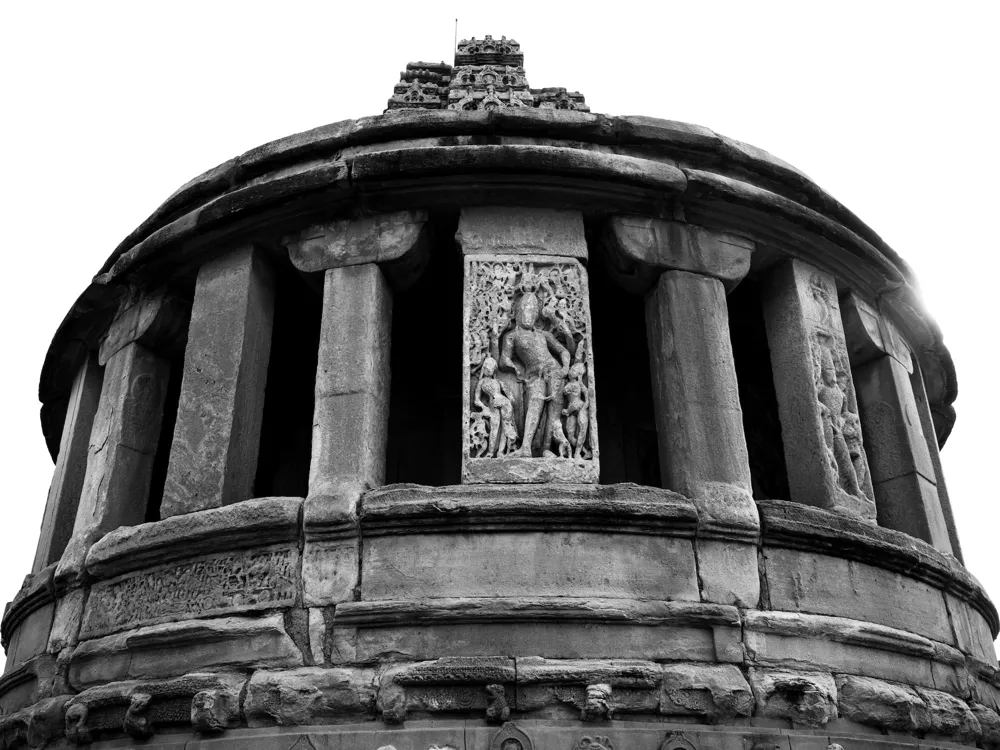Hampi, a UNESCO World Heritage Site located in Karnataka, India, is a treasure trove of historical and architectural wonders, and one of its most intriguing attractions is the King's Balance. This ancient scale, also known as Tula Bhara or Tula Purushadana, holds a fascinating history dating back to the Vijayanagara Empire, which flourished from the 14th to the 17th century. The King's Balance is not just a testament to the empire's advanced understanding of architecture and metallurgy, but also to their unique customs and ceremonial practices.
The King's Balance is an impressive structure, situated near the Vittala Temple, another architectural marvel in Hampi. The scale was used by the kings of the Vijayanagara Empire, primarily for a ceremony called 'Tula Purushadana'. In this ritual, the king was weighed against gold, precious stones, or food grains, which were then distributed to the priests or the poor. This practice symbolized the king's responsibility towards his subjects and his role as a custodian of wealth and prosperity.
The King's Balance is made of a simple yet effective design. It consists of two lofty granite pillars, about 15 feet high, supporting a horizontal stone beam. The beam has three hooks, from which the scale's balance was hung. The entire structure exudes a sense of grandeur and precision, reflecting the advanced architectural skills of the Vijayanagara builders. The balance is located in a strategic position, by the side of the main road leading to the Vittala Temple, suggesting its importance in the social and religious life of the empire.
The historical significance of the King's Balance is immense. It not only provides insight into the ritualistic aspects of the Vijayanagara Empire but also into their social structure and governance. The practice of Tula Purushadana was not merely a religious ceremony but also an act of charity and a display of the king's benevolence. The King's Balance stands as a silent witness to the empire's glory days, its cultural richness, and its architectural ingenuity.
Today, the King's Balance attracts tourists and history enthusiasts from across the globe. Its simplistic yet powerful structure continues to awe visitors, and its historical background offers a glimpse into the life of a once-great empire. As you walk around the majestic ruins of Hampi, the King's Balance stands as a poignant reminder of the past, urging us to delve deeper into India's rich heritage and the stories etched in its ancient stones.
The King's Balance in Hampi is not only a significant historical structure but also a marvel of ancient Indian architecture. Understanding its architectural design provides insight into the technological advancements and artistic sensibilities of the Vijayanagara Empire. The balance, primarily constructed from granite, showcases the empire's mastery in stone carving and structural design.
The structure consists of two vertical granite pillars, each rising to a height of about 15 feet. These pillars are intricately carved with designs that reflect the artistic traditions of the era. The pillars support a horizontal beam, also made of granite, which has three hooks attached to it. These hooks were used to hold the scale's balance, where the king was weighed against gold or other valuables.
The design of the King's Balance is simple yet sophisticated. The use of granite, a hard and durable stone, indicates the builders' understanding of materials and their properties. The precision with which the pillars and the beam have been carved and aligned showcases their advanced knowledge in geometry and balance. The entire structure is not only functional but also aesthetically pleasing, with its clean lines and minimalistic design standing in contrast to the more elaborately decorated temples nearby.
Furthermore, the location of the King's Balance, near the Vittala Temple, is significant. It suggests that the structure was not just a tool for ceremonial use but also a symbol of authority and divine sanction. The proximity to the temple implies a connection between the ruler's authority and the divine, a common theme in the architecture of the Vijayanagara Empire.
The architectural brilliance of the King's Balance lies in its ability to blend functionality with symbolism. It served a practical purpose during the Tula Purushadana ceremony while also representing the king's role as a just and generous ruler. This dual purpose is a testament to the multifaceted nature of Vijayanagara architecture, which combined practicality, aesthetics, and symbolism in its structures.
In conclusion, the architecture of the King's Balance is a remarkable example of the architectural prowess of the Vijayanagara Empire. Its design not only reflects the technical skills of the builders but also the cultural and religious ethos of the time. The King's Balance remains a source of inspiration and admiration for architects, historians, and visitors alike, symbolizing the rich architectural heritage of ancient India.
The ideal time to visit the King's Balance in Hampi is from October to February when the weather is pleasant and conducive for exploration. Summers in Hampi can be extremely hot, making it challenging to wander around the ruins comfortably.
Opting for a guided tour can enhance your visit to the King's Balance. Knowledgeable guides provide insights into the history, architecture, and cultural significance of the structure, making your experience more enriching.
For photography enthusiasts, the King's Balance offers a stunning backdrop. Early mornings and late afternoons provide the best light for capturing the essence of this ancient structure. Remember to carry your camera and capture the memories.
As a historical site, it's important to respect the King's Balance by not defacing the structure. Avoid climbing on the ruins or causing any damage, as these are precious remnants of a glorious past.
When planning a visit to the King's Balance, consider combining it with other nearby attractions in Hampi, such as the Vittala Temple and the Virupaksha Temple, to make the most of your trip.
Reaching the King's Balance in Hampi is convenient as it is well-connected to major cities in India. The nearest railway station is Hospet, about 13 kilometers from Hampi. From Hospet, you can take a local bus or hire a taxi to reach Hampi. Alternatively, Hampi is also accessible by road from cities like Bangalore and Hyderabad. Once in Hampi, the King's Balance is easily reachable by foot or by hiring a bicycle or auto-rickshaw, as it is a significant landmark within the heritage site.
Overview of King's Balance, Hampi, Karnataka
Architecture of King's Balance
Tips When Visiting King's Balance
Best Time to Visit
Guided Tours
Photography Tips
Respecting the Site
Combining Your Visit
How To Reach King's Balance
King's Balance
Hampi
Karnataka
NaN onwards
View hampi Packages
Weather :
Tags : Historical Site
Timings : Open all days of the week
Planning a Trip? Ask Your Question
Hampi Travel Packages
View All Packages For Hampi
Top Hotel Collections for Hampi

Private Pool

Luxury Hotels

5-Star Hotels

Pet Friendly
Top Hotels Near Hampi
Other Top Ranking Places In Hampi
View All Places To Visit In hampi
View hampi Packages
Weather :
Tags : Historical Site
Timings : Open all days of the week
Planning a Trip? Ask Your Question
Hampi Travel Packages
View All Packages For Hampi
Top Hotel Collections for Hampi

Private Pool

Luxury Hotels

5-Star Hotels

Pet Friendly








